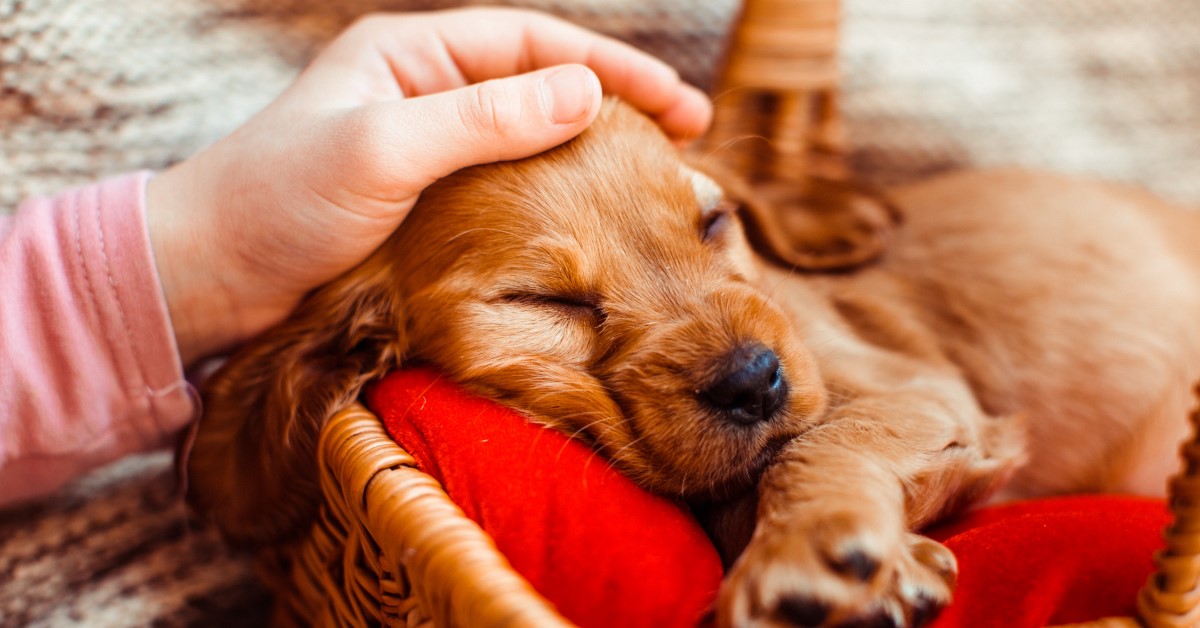Why Do Dogs Dream?
Dogs are similar to humans and can enter REM sleep where the brain is most active, triggering vivid and relatable dreams.

Seeing a sleeping puppy curl its lips, twitch its paws, and make small whimpering sounds as it is fast asleep is something quite amusing and angelic to behold. Humans often personify dog actions and movements, so the general belief is that dogs dream, much like humans. Recent studies and evidence link dog and human dreams closer than ever before, connecting sleep patterns, brain waves, and dream activity across all mammals and invertebrates.
Like humans, dogs go through a regular sleep cycle throughout the night that includes both rapid-eye-movement sleep and non-rapid-eye-movement sleep, often abbreviated to REM sleep. As early as 1977, scientists studied dogs' brainwaves and reported that they also experience the same sleep patterns.
During the study, scientists found that dogs spend about 21% of their sleeping hours in drowsy sleep and 12% of their time in REM sleep. Humans, comparatively, spend about 20% of their time in REM sleep. The brain is most active during REM sleep, allowing humans and dogs alike to experience vivid dreams. Most dreams occur during REM sleep when the brain is most active. Dogs dream simply because their body allows them to enter REM sleep, promoting fiery brainwave patterns that trigger dream activity.
Is There Evidence Proving Dogs Dream?
Animal behaviorists and scientists have studied the way animals and humans dream by examining sleep patterns and brain activity. Recent studies have followed the way rats sleep to understand the way dogs sleep better. Evidence suggested that rats experience different brain activity depending on REM sleep vs. non-REM sleep. Scientists concluded that even in non-REM sleep, a rat's brain experiences bursts of activity, which indicates they dream the same way humans dream.
By concluding that rats' brains function in the same way that human brains do, scientists have determined that dreaming is consistent across all mammals and vertebrates. So, when your dog is twitching, whining, and snorting throughout its restless sleep, chances are good your dog is actually dreaming much the same way humans do.
What Do Dogs Dream About?
Animal behaviorists and scientists have studied the way animals and humans dream by examining sleep patterns and brain activity. Recent studies have followed the way rats sleep to understand the way dogs sleep better. Evidence suggested that rats experience different brain activity depending on REM sleep vs. non-REM sleep. Scientists concluded that even in non-REM sleep, a rat's brain experiences bursts of activity, which indicates they dream the same way humans dream.
Scientists have determined that dreaming is consistent across all mammals and vertebrates by concluding that rats' brains function in the same way that human brains do. So, when your dog is twitching, whining, and snorting throughout its restless sleep, chances are good your dog is dreaming much the same way humans do.
Dog Nightmares
Humans know all too well the feeling of being jerked out of restful sleep from a terrible nightmare. If dogs' dreams follow the same pattern as a human's, it would make sense that dogs would also experience nightmares from time to time. However, animal behaviorists and scientists assure pet owners that nightmares are far rarer in dogs than in people. Most scientists agree that most dog dreams are positive or neutral dreams.
If you notice that your dog is dreaming and potentially having a nightmare, resist the urge to wake your dog. On average, dogs require much more sleep than humans. Dreams are a natural part of the sleep cycle, and although uncomfortable, nightmares are just as natural. Always allow your dog to rest when it needs to sleep to maintain a healthy and happy dog. A shocking 60% of dog bites occur when a dog is unexpectedly awakened from a restful sleep.
Curious Dreaming Patterns
Scientists are getting closer to understanding the way dogs and other mammals dream, however, in their process of discovering the truth, scientists are coming across unusual and curious patterns. For unexplained reasons, the dog's size determines the size of the dream. Small dogs seem to have shorter but more frequent dreams, while larger dogs dream longer but less frequent dreams. A poodle may only dream for one minute but dream every ten minutes of sleep. Comparatively, a bigger shepherd may dream for three to five minutes but only dream every hour.
The dog's age also seems to impact a normal canine dream cycle. Innocent puppies seem to dream much more than adults, which may be related to the underdeveloped pons in the brain stem. Older dogs also tend to dream more, connecting tired and exhausted pons to uncontrollable twitches and jerks. Or, an older dog just may be more relaxed, allowing it to fall into deeper REM sleep, promoting more dreams.
Pet owners can happily reassure themselves that their twitching, sleeping dog is happily dreaming about what it loves best. Although nightmares can occur, the majority of dog dreams are overwhelmingly positive. A dog is able to dream because it can enter REM sleep, which promotes increased brain activity and vivid dreams. Dreaming is natural for humans, and a recent scientific study has concluded that dreaming appears to be a natural occurrence for all mammals and invertebrates.
Ready to start saving money on pet wellness care?
Then take a look at Mint Wellness, the pet wellness plan that provides fast reimbursement on routine pet care. Save on vaccinations, wellness exams, preventatives, dental, and more!
Learn More


